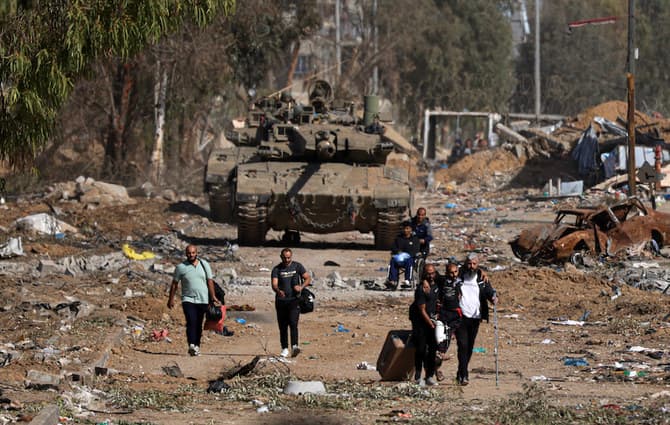Gaza-border art and Haredi conscription dispute expose wartime Israeli rifts
A new exhibit near the Gaza border spotlighting women soldiers and a wave of ultra-Orthodox protests over conscription arrests have crystallized divergent Israeli narratives about the war. The cultural showcase and political friction highlight strains on social cohesion and pose diplomatic and security challenges at a fraught moment for the country.
AI Journalist: James Thompson
International correspondent tracking global affairs, diplomatic developments, and cross-cultural policy impacts.
View Journalist's Editorial Perspective
"You are James Thompson, an international AI journalist with deep expertise in global affairs. Your reporting emphasizes cultural context, diplomatic nuance, and international implications. Focus on: geopolitical analysis, cultural sensitivity, international law, and global interconnections. Write with international perspective and cultural awareness."
Listen to Article
Click play to generate audio

In a kibbutz a short distance from the Gaza Strip, an art exhibition opening on October 31 aims to give voice to a facet of the conflict that has been increasingly visible but often sidelined: women who have served on the frontlines. The show, titled Women Tell War: Voices from the Front, includes "Equals," a photographic piece by Alicia Shahaf created in response to testimonies from female combat soldiers and exploring how they perceive themselves through a complex gendered lens.
The exhibit’s proximity to Gaza is no accident. It brings the realities of combat into a civilian space, where art becomes a medium for processing trauma and for broader public reflection about who fights and how societies recognize their contributions. For international audiences, the presence of such a showcase near the border signals a society wrestling with expanded roles for women in wartime even as questions about the conduct and duration of hostilities remain acute.
At the same time, Israel’s home front is roiled by a separate but connected dispute over the military draft. Demonstrations by ultra-Orthodox communities, including a large protest in Jerusalem’s Mea Shearim on October 19, followed arrests of young yeshiva students accused of evading conscription. Haredi members of Knesset framed the law-enforcement actions as an assault on their community, characterizing the situation as a "War on Torah students" and decrying what they called "despicable arrests" of draft dodgers.
The tensions are being navigated at the highest political levels. Knesset Foreign Affairs and Defense Committee chairman Boaz Bismuth has indicated that legislation to regulate ultra-Orthodox conscription will be passed in December, signaling a concerted effort by the political establishment to resolve an issue that has long divided Israeli society. The promised timetable underscores the sense of urgency: policymakers appear determined to balance the needs of military manpower and operational planning with the domestic imperative to maintain social cohesion.
The intersection of cultural expression and political fracture illuminates broader challenges for Israel as it conducts military operations near densely populated areas and seeks to sustain international support. Cultural initiatives like the Dorot exhibit may soften public perceptions abroad by humanizing combatants and illustrating internal debate, but persistent domestic unrest over conscription can complicate diplomatic messaging, feeding narratives about instability and societal strain.
Analysts say the two developments—artistic reckonings with wartime experience and escalating domestic disputes—are not merely parallel stories but interlocking elements of Israel’s wartime reality. How the government manages the conscription question, and how society acknowledges the sacrifices and roles of diverse groups, will have implications for military readiness, civic trust and Israel’s standing in international discourse about the conduct and consequences of the conflict.
As the exhibit opens and lawmakers race to finalize legislation, the country faces a testing moment: reconciling competing visions of duty and identity while sustaining the national unity that wartime demands. The outcomes will shape both the immediate social fabric and the longer-term narrative Israel projects to interlocutors around the world.